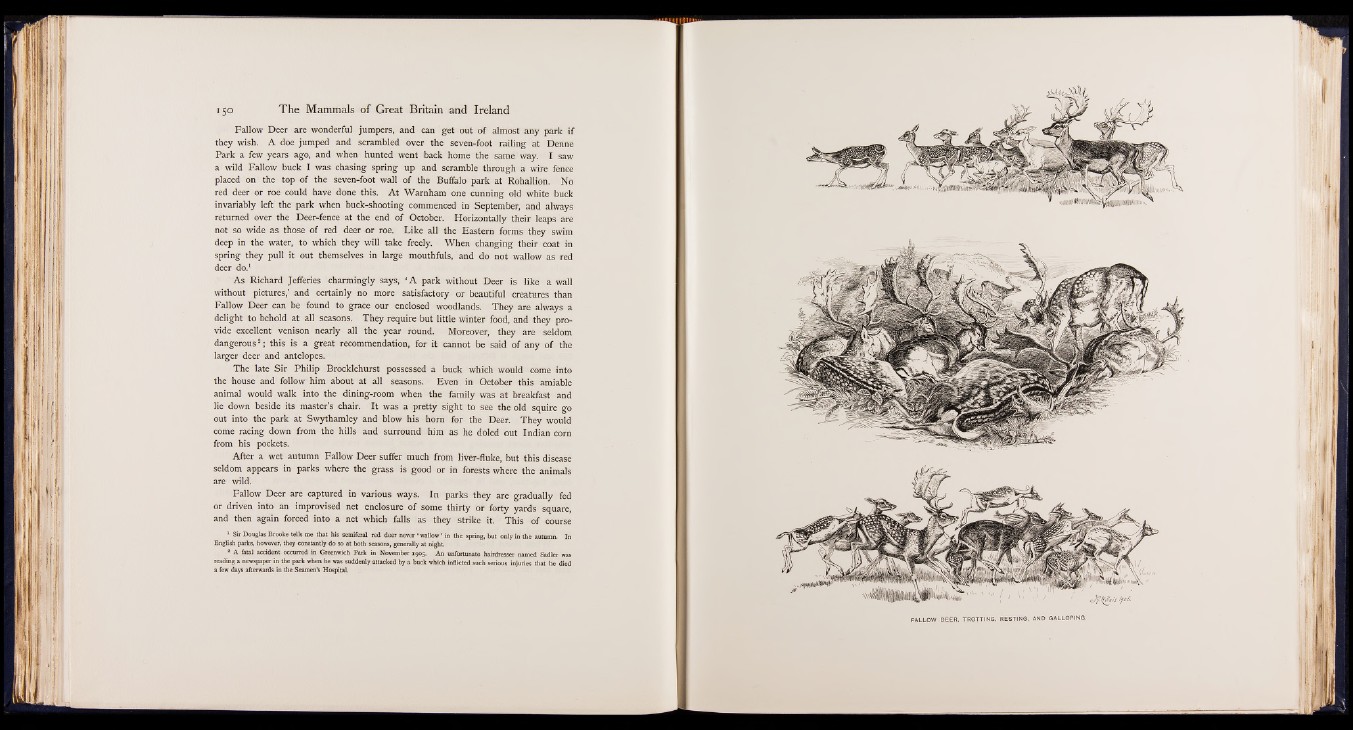
Fallow Deer are wonderful jumpers, and can get out of almost any park if
they wish. A doe jumped and scrambled over the seven-foot railing at Denne
Park a few years ago, and when hunted went back home the same way. I saw
a wild Fallow buck I was chasing spring up and scramble through a wire fence
placed on the top of the seven-foot wall of the Buffalo park at Rohallion. No
red deer or roe could have done this. At Warnham one cunning old white buck
invariably left the park when buck-shooting commenced in September, and always
returned over the Deer-fence at the end of October. Horizontally their leaps are
not so wide as those of red deer or roe. Like all the Eastern forms they swim
deep in the water, to which they will take freely. When changing their coat in
spring they pull it out themselves in large mouthfuls, and do not wallow as red
deer do.1
As Richard Jefferies charmingly says, ‘ A park without Deer is like a wall
without pictures,’ and certainly no more satisfactory or beautiful creatures than
Fallow Deer can be found to grace our enclosed woodlands. They are always a
delight to behold at all seasons. They require but little winter food, and they provide
excellent venison nearly all the year round. Moreover, they are seldom
dangerous2; this is a great recommendation, for it cannot be said of any of the
larger deer and antelopes.
The late Sir Philip Brocklehurst possessed a buck which would come into
the house and follow him about at all seasons. Even in October this amiable
animal would walk into the dining-room when the family was at breakfast and
lie down beside its master’s chair. It was a pretty sight to see the old squire go
out into the park at Swythamley and blow his horn for the Deer. They would
come racing down from the hills and surround him as he doled out Indian corn
from his pockets.
After a wet autumn Fallow Deer suffer much from liver-fluke, but this disease
seldom appears in parks where the grass is good or in forests where the animals
are wild.
Fallow Deer are captured in various ways. In parks they are gradually fed
or driven into an improvised net enclosure of some thirty or forty yards square,
and then again forced into a net which falls as they strike it. This of course
1 Sir Douglas Brooke tells me that his semiferal red deer never ‘ wallow ’ in the spring, but only in the autumn. In
English parks, however, they constantly do so at both seasons, generally at night
4 A fatal accident occurred in Greenwich Park in November 1905. An unfortunate hairdresser named Sadler was
reading a newspaper in the park when he was suddenly attacked by a buck which inflicted such serious injuries that he died
a few days afterwards in the Seamen’s Hospital.
FALLOW BEER, TROTTING, RESTING, AND GALLOPING.